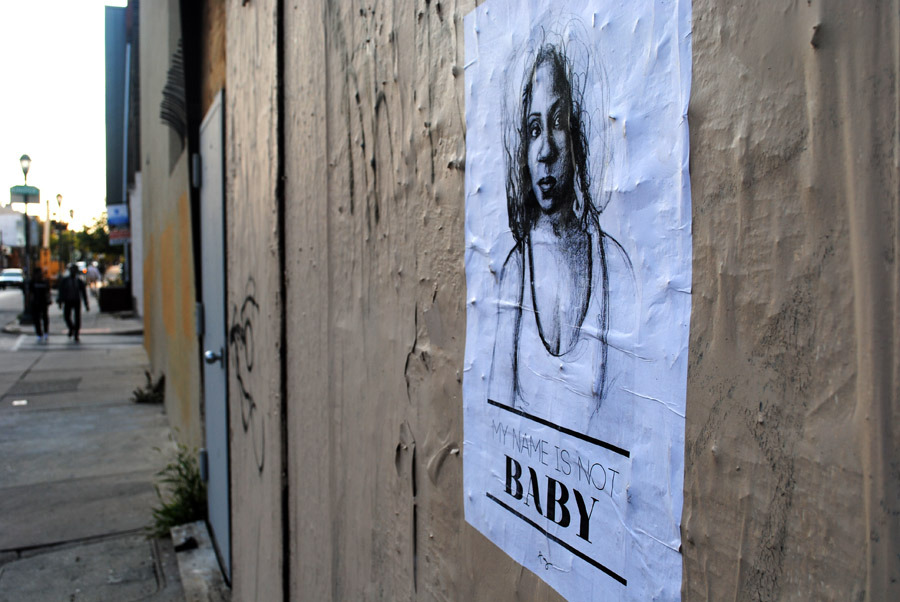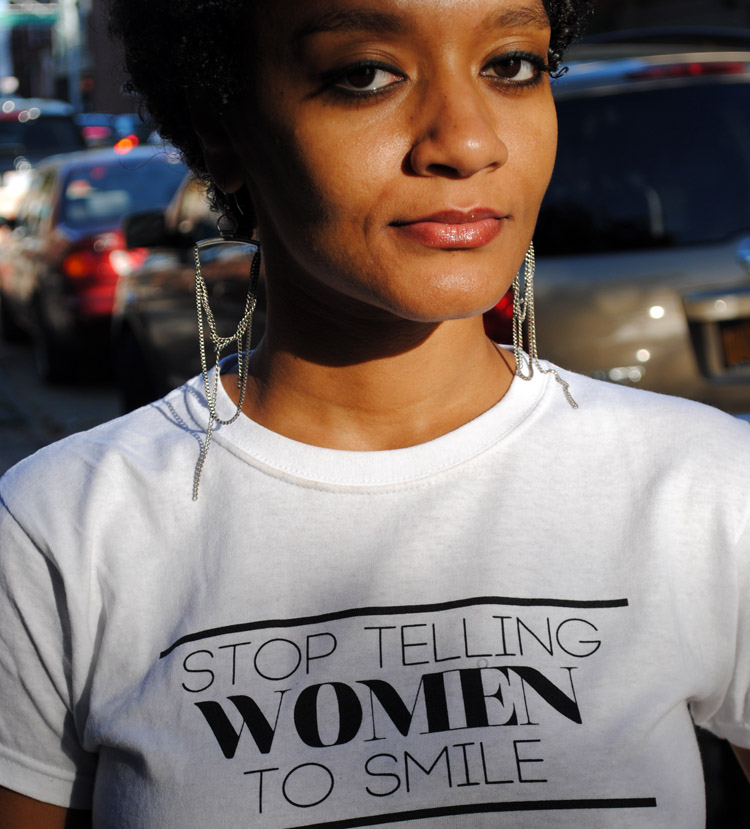Nov. 25 – Dec. 10 are the 16 Days of Activism Against Gender-Based Violence. To commemorate the week, we are featuring 1 activism idea per day. This information is excerpted from my new book Stop Global Street Harassment: Growing Activism Around the World (Praeger 2015).
Painting murals and spray-painting graffiti against street harassment is a type of political art and communication that has been used in many cultures since ancient times.

During the Egyptian Revolution of 2011, graffiti art and murals were used to voice political opinions. Some women used these to speak out against the sexual harassment and violence many women protesters faced. Artist El Zeft nad Mira Shihadeh, for example, painted a mural called Circle of Hell depicting dozens of leering men surrounding one woman like a pack of wolves surrounding its prey.
One graffiti stencil from that time period was a blue bra accompanied by the caption “No to the stripping of people” and below it was the outline of a foot that said, “Long live the revolution.” It references a 2011 videotaped beating of a female protester by police during which all of her clothes were stripped off, which revealed her blue bra. Some messages were defiant. One graffiti stencil created by Hend Kheera featured a woman with the caption, “Warning! Don’t touch or castration awaits you!” A stencil created by Mira Shihadeh (featured on the book’s cover) showed a woman standing tall and holding a spray can to spray away tiny men. The caption read “No to sexual harassment.”
Egyptian anti-street harassment activists with the group HarassMap have also used graffiti to bring attention to sexual harassment in public spaces. In 2013, for example, a team of mostly male volunteers in Giza wrote messages on walls like “Be a man; protect her from harassment instead of harassing her” and “No to harassment” while a team in Alexandria covered up sexist graffiti that promoted violent harassment by painting a mural that said, “LOVE.”
Anti-street harassment activists in Nepal and the United States painted murals in 2014. In Kathmandu, ten young women and men from the group Astitwa painted a huge mural with a street, a “stop” hand and their logo. The main message in green block lettering was “We Are against Street Harassment,” and each person placed her or his hands in red paint and added their hand-print below it.

On their U.S. mural, People’s Justice League (formerly Hollaback! Appalachian Ohio) wrote the messages “Bobcats against cat-calls” and “YOU have the power to end street harassment” (with their logo) and drew a map of uptown Athens with red and green dots showing where people had reported being harassed (red) and where they reported intervening in harassment situations (green).
Help fund our work in 2016, donate to our end-of-year giving campaign!


